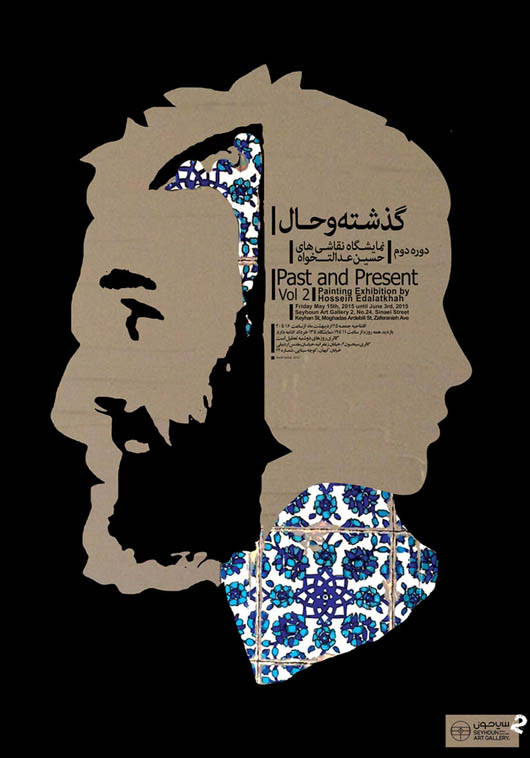آثار عدالتخواه بازتابدهنده میراث فرهنگی و ریشه های محیطی و بومی او توأم با تفسیری نو و جدید از زبان شعری ادبیات و مینیاتورهای ایرانی است.
در آثار او، نمادهای سنتی ایرانی، طرحهای گل تکراری یادگار دوران صفوی، تصاویر یا نمادهای رنگارنگ و شمایلها و پیکرههای تک رنگش چنان با هم ترکیب میشوند و درهم میآمیزند که گویی اثر او یا هنوز پایان نیافته یا با گذشت زمان به تدریج محو شده است. آثار او همچون استعارهای پیوند دهنده در شعر عمل میکنند و در واقع این آثار به دلیل کاربرد حسابشده نمادها و تصاویر برای معناسازی شاعرانه هستند.
جنسیت پیکرههای آثارش به درستی مشخص نیست. خطوط سیاهرنگی که تنها با گچ سیاه ترسیم شدهاند به پیکرههایش جلوهای مردانه میبخشند حال آنکه موی بلندی که بر شانههای این پیکرهها میلغزد به آنها جلوهای زنانه، ظرافت و شکنندگیای خاص و حجبی مرموز میبخشد. این پیکرهها دهان و چشم ندارند، به گونهای ترسیم میشوند که نیمرخشان متفکر و رویاگونه به نظر میرسد، گویی نمیخواهند با بیننده رو در رو قرار بگیرند. در آثار کوچکتر دیگرش، این پیکرهها به مجسمههای نیمتنهای که لایههای رنگارنگی سرهاشان را پوشانده و رو در روی بیننده دارند، تقلیل مییابند گویی تفکرات یا رویاهاشان که در حال تراوش از مغزهاشان بوده به حلقههای زیبای گلهایی خاموش بدل شده اند.
Edalatkhah’s works reflect the cultural heritage and the roots of his background alongside with a modern interpretation of the poetical language of Persian literature and miniatures.
In his work traditional Persian symbols, the combination of recurrent Safavid floral designs, his own very colorful imagery or symbols and a monochrome figure melt into each other in a strange way, as if the painting was not quite finished or had faded with time. Most probably in reference to a thousand year old heritage. The work functions like a binding metaphor in poetry, and is indeed very poetic in terms of its method of meaning-construction through calculated use of symbolism and imagery.
The gender of the figure in his paintings is not quite clear. Merely outlined in black chalk the figure seems to be a male body but long hair falls on the shoulders giving it a feminine touch, a certain fragility, a hint of shyness. The figure has no eyes and no mouth, it mainly stands side-ways as if it wanted to avoid facing the spectator, lost in thoughts or dreams. In other smaller works the figure is reduced to the bust facing the spectator and colorful interlacing covers the head, as if the thoughts or dreams, bursting out of the brain, had muted in lovely flowers strings.
